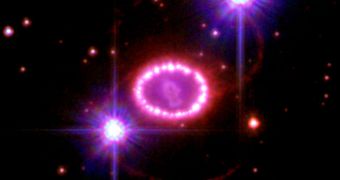A group of investigators in the United States is currently taking on the difficult task of understanding how core-collapse supernovae (CCSN) take place, and how the resulting pulsars come to be.
This has been an elusive mystery in astrophysics for many years, and a large numbers of research teams have tried to crack the problem. The new approach revolves around using the Cray XT5 supercomputer called Jaguar to create simulations of the phenomena.
The research team is led by US Department of Energy (DOE) Oak Ridge National Laboratory (ORNL) expert Tony Mezzacappa, and it uses the Oak Ridge Leadership Computing Facility for the job.
Until now, scientists have been able to figure out that CCSN usually take place in the arms of spiral galaxies, and also in HII regions, where numerous stellar nurseries are usually concentrated.
One of the implications of this is that massive stars, 8 times larger than the Sun or heavier, are the progenitor stars for this type of cosmic events. Experts are currently directing their attention towards analyzing these stars' magnetic fields.
Their origins and effects on the stars are of great interest to astronomers. This is why the team used Jaguar to simulate a supernova progenitor, and then searched for the origins of magnetic fields.
The most common result of CCSN events are pulsars, a type of neutron stars that feature the strongest magnetic fields of all stars in the Universe. Experts realized some time ago that the speed at which pulsars rotate may be connected to the strength of their magnetic fields.
But massive stars – the progenitors of pulsars – rotate slowly, and this opposition baffled experts for some time. The ORNL team now proposes the existence of an as-of-yet-unknown magnetic field-generation mechanism.
This would eliminate the need to consider stellar rotation as the main driver and source of magnetic fields. The newly-found phenomenon as been dubbed the spiral mode. In the new study, the team also found that the spiral mode can determine the strength of magnetic fields directly.
“We found that starting with a magnetic field similar to what we think is in a supernova progenitor, this turbulent mechanism is capable of magnifying the magnetic field to pulsar strengths,” explains ORNL expert Eirik Endeve, the leader author of the new study.
These discoveries may contribute to increasing astrophysicists' understanding of supernova events as a whole. These are some of the most violent phenomena in the Universe, and the brightness of exploding stars can briefly outshine entire galaxies, Daily Galaxy reports.

 14 DAY TRIAL //
14 DAY TRIAL //